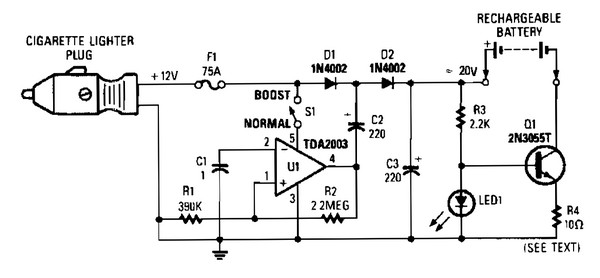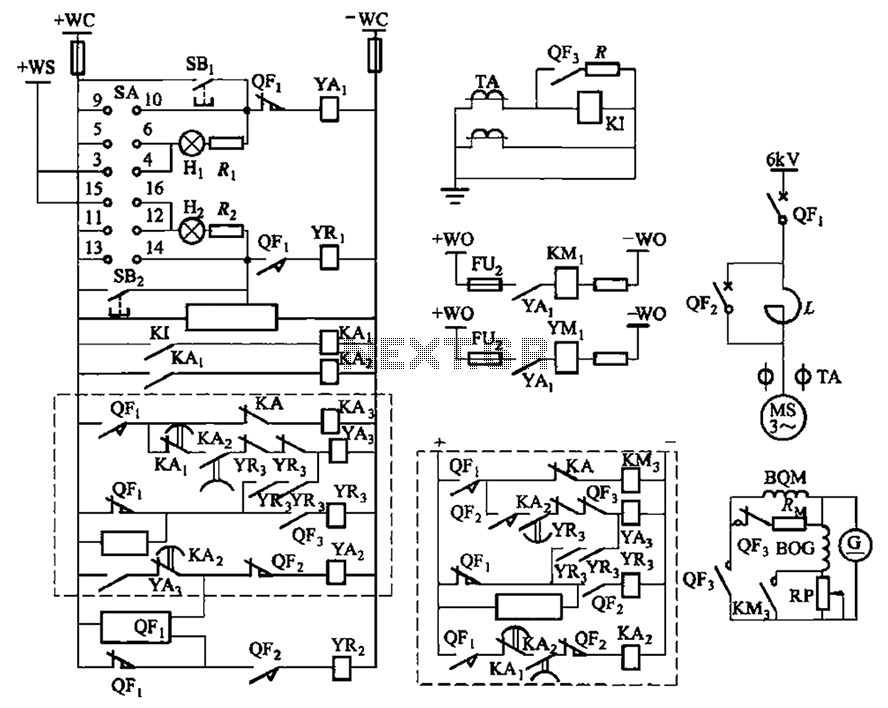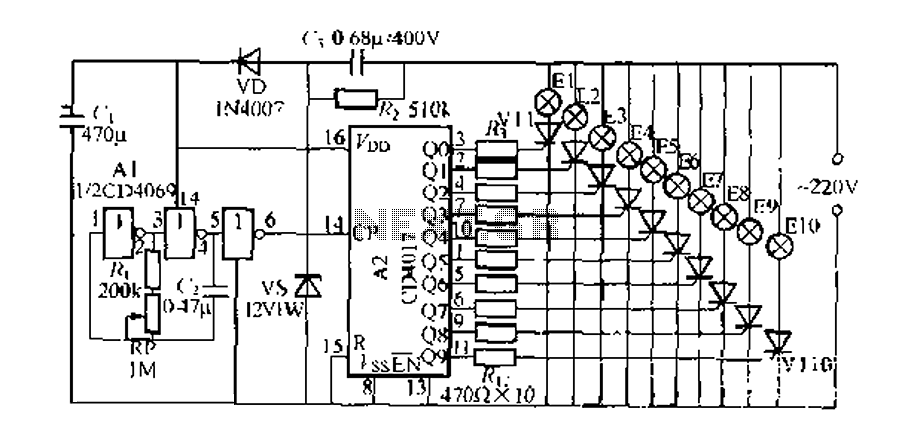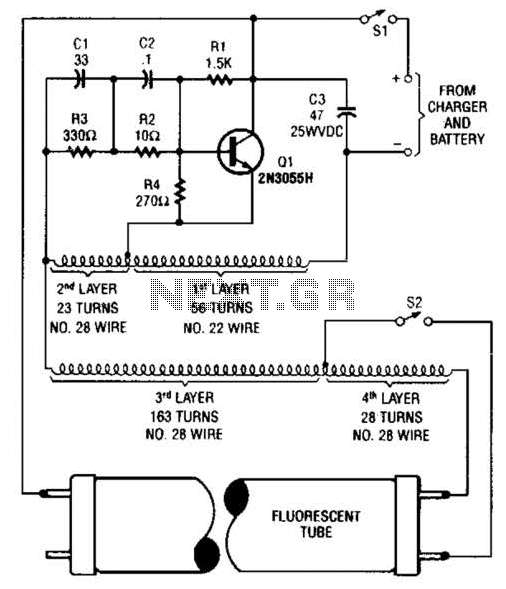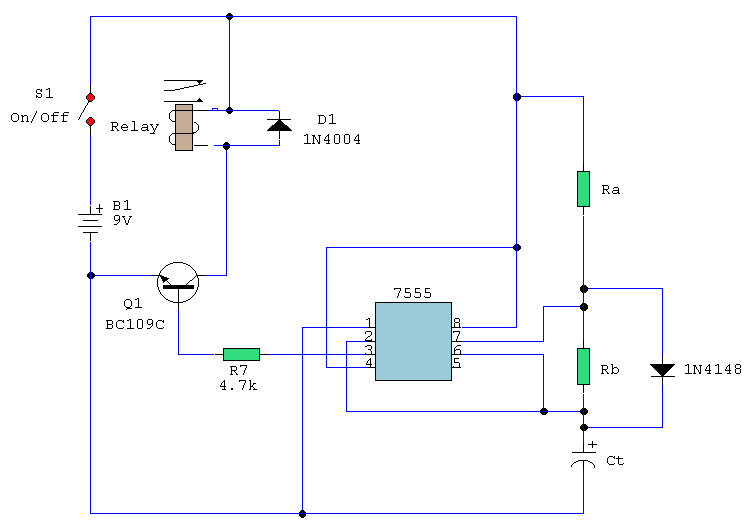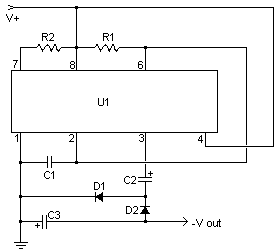
100w inverter circuit 12vdc to 220vac
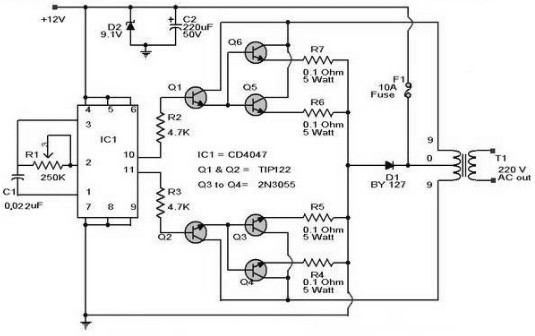
A 12 V car battery can be utilized as the 12 V input power source. The potentiometer R1 can be adjusted to achieve a 50 Hz output frequency. It is recommended to use a 10 A fuse in series with the battery as depicted in the circuit.
The circuit in question is designed to convert a 12 V DC input from a car battery into a specific output frequency of 50 Hz, which is commonly used in various applications such as powering AC loads or driving motors. The primary components of the circuit include the car battery, a potentiometer (R1), and a fuse.
The car battery serves as the main power supply, providing a stable 12 V DC voltage. To ensure safety and protect the circuit from overcurrent conditions, a 10 A fuse is placed in series with the battery. This fuse will blow if the current exceeds 10 A, preventing potential damage to the components and the battery itself.
The potentiometer R1 is a variable resistor that allows for fine-tuning of the output frequency. By adjusting the resistance of R1, the user can modify the timing characteristics of the circuit, which directly influences the output frequency. The circuit may include additional components such as a timer IC or an oscillator circuit, which would help generate the desired 50 Hz signal based on the adjustments made to the potentiometer.
Overall, this circuit is a practical solution for applications requiring a low-frequency AC output derived from a standard 12 V DC source. Proper attention to component ratings, especially the fuse and potentiometer, will ensure reliable operation and longevity of the circuit.You can use 12 V car battery as the 12V input power source. Adjust the potensiometer R1 to get the 50Hz output frequency. Use a 10 A fuse in series with the battery as shown in circuit. 🔗 External reference
The circuit in question is designed to convert a 12 V DC input from a car battery into a specific output frequency of 50 Hz, which is commonly used in various applications such as powering AC loads or driving motors. The primary components of the circuit include the car battery, a potentiometer (R1), and a fuse.
The car battery serves as the main power supply, providing a stable 12 V DC voltage. To ensure safety and protect the circuit from overcurrent conditions, a 10 A fuse is placed in series with the battery. This fuse will blow if the current exceeds 10 A, preventing potential damage to the components and the battery itself.
The potentiometer R1 is a variable resistor that allows for fine-tuning of the output frequency. By adjusting the resistance of R1, the user can modify the timing characteristics of the circuit, which directly influences the output frequency. The circuit may include additional components such as a timer IC or an oscillator circuit, which would help generate the desired 50 Hz signal based on the adjustments made to the potentiometer.
Overall, this circuit is a practical solution for applications requiring a low-frequency AC output derived from a standard 12 V DC source. Proper attention to component ratings, especially the fuse and potentiometer, will ensure reliable operation and longevity of the circuit.You can use 12 V car battery as the 12V input power source. Adjust the potensiometer R1 to get the 50Hz output frequency. Use a 10 A fuse in series with the battery as shown in circuit. 🔗 External reference
